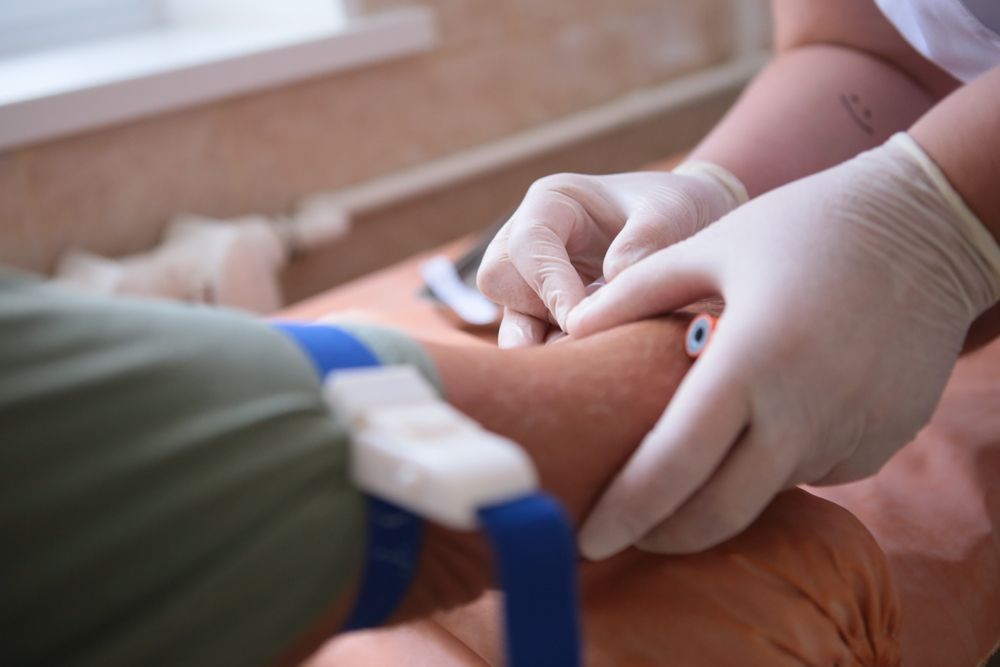Peritoneal Dialysis Treatment Coming Soon!
Written by: Vitality Dialysis

Stage 5 kidney disease is kidney failure, also known as end-stage renal disease (ESRD). This means the kidneys can only operate at 15% or less of their capacity. At this stage, a patient needs to have regular dialysis to do the kidneys’ work until a kidney transplant is available. Hearing the words “kidney failure” from your healthcare provider can be scary and overwhelming, but thanks to modern medical technology associated with home dialysis, patients can live full, active lives for many years, even with stage 5 kidney disease.
Understanding Stage 5 Chronic Kidney Disease (CKD)
The kidneys do the life-sustaining job of removing toxins, waste, and excess water from your bloodstream. Chronic kidney disease develops over time, and many people do not realize anything is wrong until the later stages, usually sometime between stages 3 and 4, when symptoms become more pronounced. Receiving regular healthcare assessments, especially if you have diabetes or high blood pressure, and working on kidney-friendly lifestyle adjustments can help slow down or stall the worsening of CKD for many years, with the hope of it never reaching stage 5 kidney disease. When CDK is diagnosed in earlier stages, it is easier to prevent additional damage to the kidneys. It’s important to understand the stages of chronic kidney disease:
- Stage 1: The kidneys can operate at 90% capacity.
- Stage 2: The kidneys operate between 60% and 89% capacity.
- Stage 3: This stage is separated into two substages: 3a (45% to 59% capacity) and 3b (30% to 44% capacity)
- Stage 4: Kidney function is severely impaired to between 15% and 29% capacity.
- Stage 5: Kidney failure; the kidneys are barely operating at 15% capacity or less.
At stage 5, kidney disease, symptoms of serious fatigue, swelling in the extremities and face, and shortness of breath occur. Patients at this stage require dialysis or a kidney transplant to survive.
Symptoms & Early Indicators
By the time a patient reaches stage 5 kidney disease, the symptoms of kidney failure will be severe and life-threatening because toxins, fluids, and waste are accumulating in the blood and damaging the organs. The kidneys can also no longer produce the hormone responsible for making red blood cells, which robs tissues of oxygen and prevents the activation of vitamin D that protects the bones. Because the kidneys help regulate blood pressure, blood pressure can elevate to dangerous levels. The symptoms will be difficult to manage and very uncomfortable. Once the kidneys have stopped working, the blood can also become acidic and have too much potassium and phosphorus. Dialysis is necessary at this point until a kidney transplant can be arranged. These symptoms include:
- Severe swelling in the extremities and face
- Loss of appetite
- Chest pain
- Headaches
- High blood pressure
- Inability to focus or concentrate
- Nausea
- Vomiting
- Muscle cramping
- Extreme fatigue and weakness
- Bone loss
- Anemia
- Itchy skin
- Inability to urinate (pee)
- Changes in skin pigmentation (darkening)
If you have been diagnosed with kidney failure, your doctor will send you to a kidney doctor called a nephrologist right away. Your nephrologist will help you
prepare to receive hemodialysis or peritoneal dialysis by establishing vascular access that enables the dialysis machine to filter your blood and keep you alive.
Stage 5 Kidney Disease: Risk Factors & Causes
Everyone runs the risk of developing kidney disease over time, especially as people get older. Nevertheless, people with certain conditions and genetic predispositions carry an even higher risk and need to be aware of the signs of kidney disease early so they can try to slow the damage. Some of these risk factors include:
- High blood pressure
- Diabetes
- Heart disease
- A family history of kidney disease
- A history of using NSAID painkillers
- A traumatic injury to the kidneys
- People over the age of 60
Potential Complications of Stage 5 CKD
Chronic kidney disease is truly a systemic disease since the kidneys clean and process the blood, which feeds and nourishes every part of the body. When the kidneys stop working, severe complications can manifest, including a higher risk of stroke and heart attack. In addition, the following complications can also arise:
- Metabolic acidosis (acid buildup in the blood)
- Anemia (too few red blood cells)
- Bone disorders because of an imbalance in calcium and phosphorus levels in the blood
- High potassium levels in the blood, also called hyperkalemia
If you have been diagnosed with stage 5 kidney disease (kidney failure), your doctor will want to regularly test your blood for these issues, even if you are already on dialysis.
Diagnostic Approaches
Diagnostic tests can confirm if the severe symptoms mentioned above are indeed kidney failure. One way to monitor kidney function is by a urine test that measures the albumin-to-creatinine ratio (uACR). The higher this ratio is, the more damage the kidneys have sustained and the risk is higher for kidney failure. If you have risk factors for CKD, this is a test your healthcare provider will want to order regularly as a touchpoint for understanding your kidney function and the potential for kidney decline.

Blood tests are also important diagnostic tests that indicate kidney function or dysfunction. Specifically, eGFR blood tests will determine the “estimated glomerular filtration rate” by measuring blood levels of creatinine, along with a ratio calculated along with your height, weight, age, gender, and ethnicity. Your healthcare provider can also order blood tests to measure mineral levels and hemoglobin to determine if some of the complications of stage 5 CKD are developing.
Management & Prevention Strategies
Although kidney damage is not reversible, it can be slowed or halted for a time. When diagnosed in its early stages, chronic kidney disease is manageable and can be stalled for years with the right care and lifestyle choices. Management and prevention strategies for CKD include:
- Medical care for risk factors—If you have diabetes, high blood pressure, or a known genetic predisposition for CKD, you should follow a healthcare plan to manage these conditions, including prescribed medications and dietary restrictions to prevent damage to the kidneys. This may involve avoiding certain medications as well, such as NSAIDs like ibuprofen, which can be hard on the kidneys.
- Nutrition—Eating a balanced, nutrient-rich diet with fewer processed foods is a good idea for everyone, but for people with a risk of developing stage 5 kidney disease, your doctor will also give you critical guidelines for reducing your sodium intake down below 2300 mg/day or even lower. Working with a dietician can help you stay on track and get the nutrients you need without stressing your kidneys.
- Living a healthy lifestyle—Regular exercise as approved by your doctor, sufficient sleep, and lowering stress levels can also help prevent worsening CKD.
- Smoking cessation—Smoking adds additional toxins into the body that can worsen kidney health, so seek help to stop once and for all.
Patient Empowerment & Resources
Although stage 5 kidney disease is a serious and life-threatening condition, starting dialysis and following your doctor’s care and lifestyle modification directions can help you live many more active, full years of life.
Home dialysis from Vitality Dialysis gives patients many options for treatment that enable them to fit this lifesaving kidney failure treatment within their busy lifestyle at their convenience. Our nurses and technicians are there to educate and empower you as you begin your dialysis journey so that you can live your best life despite kidney failure.
Live Freely with Vitality's Home Dialysis Treatments
Take control of your life with stage 5 kidney disease and get the education and resources you need to live a good life on dialysis.
Contact Vitality Dialysis today to learn more about your options and how you can still live the active, free lifestyle you cherish.
© Copyright 2024 | Vitality Dialysis Privacy Policy |
Website imagined and executed by RivalMind.
Contact






